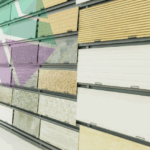What Influences the Flooring Market and How It Affects Property Claims


Flooring is often the unsung hero in a home’s aesthetic appeal, comfort, and value, —but when damage occurs, accurately assessing replacement costs can be challenging. Understanding the varied factors that influence flooring pricing can empower homeowners, insurers, and industry professionals to navigate claims more effectively and achieve fair, swift resolutions.
Flooring Market Complexity and Claims
The flooring market boasts thousands of options across numerous categories—carpet, wood, vinyl, laminate, stone, and tile—each with unique characteristics and pricing nuances. While certain products might appear nearly identical, pricing can differ drastically due to subtle variations in specifications, materials, or manufacturers.
itel understands the complexity adjusters and insurers face when determining accurate flooring valuations for claims. As an independent resource, our flooring pricing solution objectively analyzes damaged samples against a comprehensive database of over 2.2 million data points from 600+ manufacturers, covering 96% of the flooring market. This unbiased, data-driven approach ensures precise pricing and specifications, fostering fair and trusted claim settlements for all parties involved.
Key Factors Impacting the Flooring Market
Several key factors influence the price, availability, and popularity of different flooring materials. Each can significantly influence property claim valuations:
1. Material and Product Innovation
Recent industry trends have notably favored luxury vinyl plank (LVP) and rigid core flooring due to their durability, aesthetic appeal, and relative ease of installation, according to Dave Petz, itel’s flooring data expert.
“Rigid core products, particularly luxury vinyl planks, have truly dominated the market. They offer durability, ease of installation, and highly realistic visual appeal.”
Rigid core LVP utilizes advanced manufacturing technologies, creating products with composite cores that enhance durability, waterproof characteristics, and overall market appeal. Such innovations raise average product costs compared to traditional vinyl options, thus impacting overall claim costs. However, there use in place of hardwood floors (which in general, are both more expensive to install and more susceptible to water damage), can lower claim costs long-term.
2. Availability and Distribution
Distribution and availability of different flooring materials has become increasingly significant. Flooring materials sourced internationally, particularly from Asia, often encounter price volatility due to shipping disruptions, tariffs, or global events—such as those seen during the COVID-19 pandemic. “Rigid core flooring experienced a price spike due to COVID-related disruptions, rising from approximately $4.00 per square foot to around $5.30 before stabilizing back down,” says Petz. Other flooring types like carpet are mostly manufactured in the U.S., and choices like hardwood flooring have an almost exclusively U.S. based supply chain.
The complexity of international sourcing means that flooring prices can be sensitive to global economic shifts, affecting replacement costs and claim settlement amounts.
3. Product Lifecycle and Market Trends
Flooring products have varying lifecycles, directly influencing claim handling and replacement strategies. Manufacturers frequently update flooring designs to reflect current market trends. This rapid turnover complicates claim settlements, as adjusters might struggle to locate exact replacements, requiring comprehensive databases like itel’s to guide accurate valuations.
Common Misconceptions Impacting Claims
Misunderstandings about flooring characteristics can significantly affect property claims. Dave Petz identifies two common misconceptions related to flooring:
- “Waterproof” Doesn’t Mean Indestructible: While luxury vinyl products are marketed as waterproof, how the material is installed is a critical part of ensuring they hold up. “‘Waterproof’ doesn’t mean water can’t penetrate; it depends greatly on installation,” says Petz. “Poorly aligned planks or improperly sealed edges can allow water underneath, potentially causing extensive damage.”
- Misidentifying Flooring Types: Homeowners and adjusters often misclassify flooring products due to their realistic appearance, potentially leading to incorrect claim valuations. In some cases, adjusters can mistakenly identify a rigid core vinyl flooring as laminate, undervaluing the replacement significantly.
Impact on Claims Handling and Adjuster Decision-Making
For adjusters, correctly identifying and pricing flooring products is crucial. Flooring that looks similar can vary significantly in quality and cost. Accurate identification and pricing protect insurers and homeowners from incorrect valuations—either inflating costs unnecessarily or leaving homeowners insufficiently compensated.
itel addresses these issues with its robust data-driven flooring pricing solution, designed to minimize friction in the claim process. Adjusters and contractors can rapidly submit flooring tests via the itel NOW app, receiving precise pricing and product details within minutes and expediting fair and accurate claim settlements.
Expert Insights: The Future of Flooring Claims
As flooring innovation continues, accurate and timely data becomes increasingly vital. “Innovation is ongoing, especially in rigid core vinyl products,” says Petz. “This requires constant updates to our data and methods, ensuring we reflect current market conditions accurately.”
Adjusters must stay aware of emerging flooring technologies and market shifts, continually leveraging detailed databases like itel’s to stay accurate and informed. This practice ensures homeowners receive fair compensation and carriers effectively manage indemnity risks.